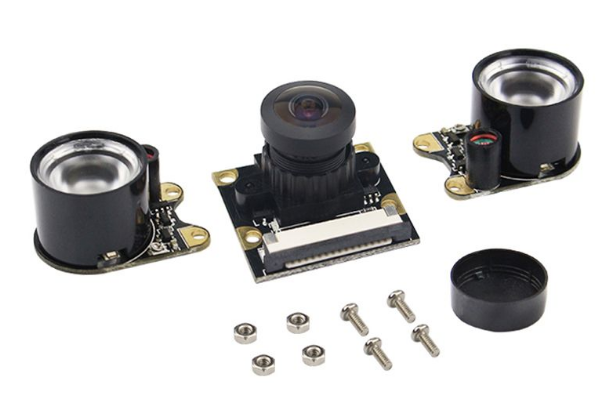What Is Wide-Angle in Camera?
Fit it all in the frame with a wide-angle lens.
A wide-angle lens has a focal length of 35mm or shorter, which gives you a wide field of view. The wider your field of view, the more of the scene you’ll be able to see in the frame. Many photographers find these lenses perfect for various situations, and it's common for them to have at least one reliable wide-angle lens in their photography gear.
When a wide-angle lens really shines.
The exceptional performance of wide-angle lenses becomes particularly evident in specific scenarios. Found in the essential kits of landscape photographers, these lenses are renowned for their ability to capture vast landscapes and starry night skies. Beyond landscape photography, they are commonly chosen for architectural and real estate shots, enhancing the sense of expansiveness and grandeur in a space. Street photographers often opt for the classic 35mm focal length, mirroring the natural perspective of the human eye. Additionally, wide-angle lenses prove highly versatile in travel photography, providing the flexibility needed to capture diverse scenes encountered during a journey.
Conversely, in certain situations, a wide lens might impede rather than enhance your photos. Portrait photographers typically opt for a higher focal length to steer clear of unflattering distortions associated with wider lenses. For activities such as sports, wildlife photography, or instances where proximity to the action is crucial, a telephoto lens is almost always the preferred choice.
A lens with a focal length below 35mm falls into the wide-angle category, yet there's a significant distinction between a 14mm lens and a 35mm lens. Broadly speaking, wide-angle lenses can be categorized into three subtypes:
Raspberry Pi Camera Module Adjustable-focus Wide-angle lens with Infrared LED Supports Night Vision OV5647 For Pi 3B/2B/A+/B+/B
Ultrawide-angle Lens:
This category includes focal lengths below 16mm and is typically reserved for specialized purposes, like capturing expansive scenes in astrophotography, such as the entire Milky Way band. Fish-eye lenses, a subtype within ultrawide lenses, boast a full 180-degree field of view, resulting in a distinctive circular and distorted appearance.
Wide-angle Lens:
Ranging from 16mm to 24mm, these lenses provide a wide perspective without reaching the extreme distortion seen in fish-eye lenses. This focal length range is often considered the sweet spot for landscape photography, offering versatility for various everyday applications.
Standard wide-angle lenses:
Falling between 24mm and 35mm, lenses in this range are labeled as "standard." They strike a balance, delivering wide shots with minimal distortion. While well-suited for a range of photography, if you aim to capture expansive views in tight spaces like cityscapes or small rooms, opting for a wider lens may be more suitable.
How to get the best-quality lens.
Prime lenses often outperform wide-angle zoom lenses due to their fewer moving parts and the ability to offer a wider maximum aperture. However, for most situations, the difference is minimal. The convenience of a zoom range often compensates for any sacrifices in image quality. Standard zoom lenses typically cover a range of focal lengths, such as 16–35mm for wide zoom or 12–24mm for ultrawide zoom, making them more versatile compared to fixed focal length lenses.
Top-performing wide-angle lenses often feature a maximum aperture of f/2.8 or wider, enabling a shallow depth of field. Additional features may include image stabilization, autofocus, and the incorporation of an aspherical lens element for sharper images and reduced distortion. While these lenses boast superior build quality, seeking these advanced features usually comes with a higher price tag. The silver lining is that used versions of most lenses can be found at a significantly lower cost than their retail price.
What to watch for when you go wide.
Distortion
Distortion is a primary concern when utilizing a wide-angle lens. Barrel distortion, characterized by the outward bowing of straight lines, becomes more pronounced as you widen the focal length. This distortion is particularly noticeable when photographing people, and it's crucial to be vigilant, especially regarding objects at the edges of your frame.
Cropped sensor conversion
The focal length doesn't directly determine the angle of view; it is contingent on your camera's sensor size. For instance, a 24mm lens provides approximately 84 degrees of view on a full-frame camera. However, when used on a cropped sensor camera like an APS-C, the effective focal length of the lens is cropped to about 38mm, resulting in a narrower 61-degree field of view.
Opting for a high-quality wide-angle lens for your crop sensor camera is an effective way to maximize your budget and achieve optimal image quality. However, it's crucial to consider the crop factor when selecting the right focal length. If you're in the market for a mirrorless camera, be mindful of compatibility with the camera's mounting system when choosing a lens. Additionally, keep in mind that using DSLR lenses on mirrorless cameras is possible with a lens converter.
Composition
Having the ability to capture an entire scene in one panoramic sweep doesn't guarantee the creation of a compelling image. The use of wide-angle lenses may lead to the temptation of capturing the entire scene without careful consideration, resulting in an image lacking a clear focal point or effective composition. The broader field of view requires meticulous arrangement of elements, increasing the margin for error in managing details.
Start shooting wide-angle photos.
Embark on wide-angle photography. Whether you seek an all-purpose lens for diverse scenes or a specialized tool for specific shots, owning a wide-angle lens is undoubtedly advantageous. To achieve the desired results, it's essential to thoroughly explore the capabilities of your lens. The more you use your wide-angle lens, the better you'll grasp its potential, enabling you to envision and capture compelling wide-angle shots.


评论
发表评论